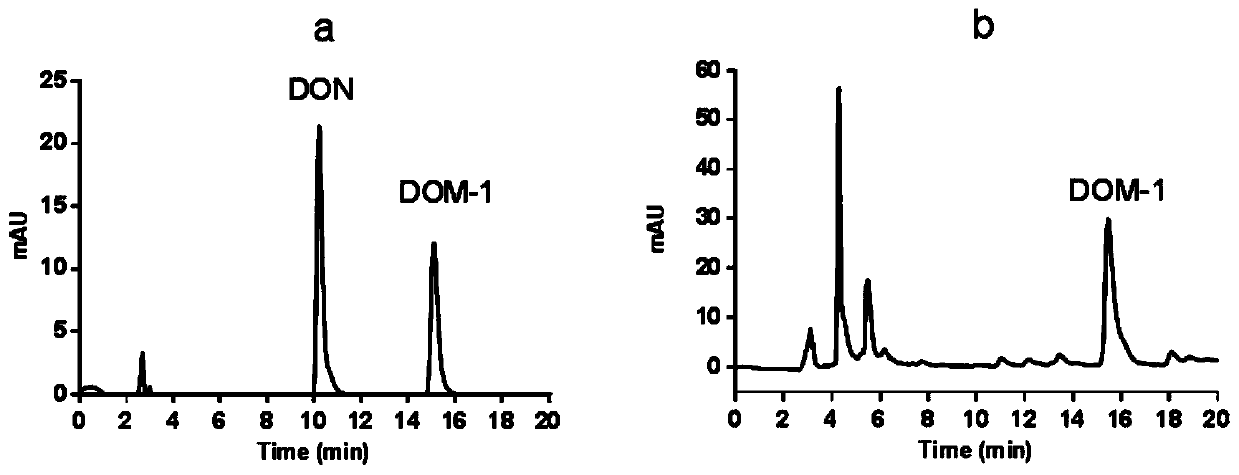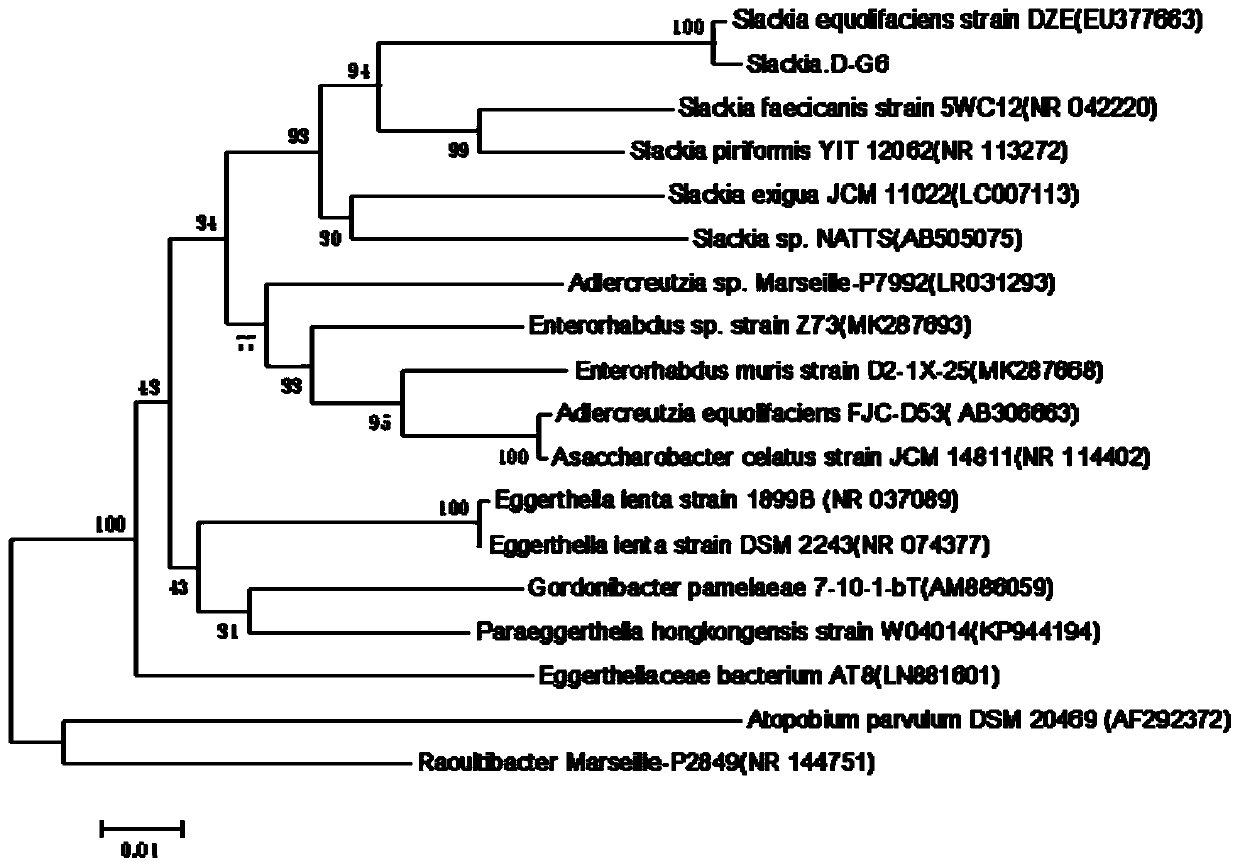(Slackia sp.) D-G6 and applications in degrading of vomitoxin
A technology of Rickettsia bacteria and strains, which is applied in the field of mycotoxin degradation, can solve problems such as failure to resolve relevant proteins or enzymes, and achieve the effects of good promotion and application prospects, stable activity, and strong ability to metabolize DON.
- Summary
- Abstract
- Description
- Claims
- Application Information
AI Technical Summary
Problems solved by technology
Method used
Image
Examples
Embodiment 1
[0042] Example 1 Preliminary Screening of DON Deepoxidation Metabolism Primary Chicken Gut Microorganisms
[0043] Preliminary screening of primary chicken intestinal microbial DON deepoxidation metabolism using continuous subculture method, the specific methods and results are as follows:
[0044] 1. Experimental method
[0045] (1) Take 20 intestinal tracts of freshly slaughtered live chickens from the market, put them into an anaerobic box, and return to the laboratory as soon as possible for follow-up experiments;
[0046] (2) Take the contents of the large intestine, small intestine, and cecum from each intestinal tract, put them into a 50mL Corning centrifuge tube, mix evenly according to the ratio of 1g of contents plus 1mL of brain heart infusion (BHI) medium, and obtain a bacterial solution for later use;
[0047] (3) Use the bacterial solution prepared in step (2) as the seed solution, then inoculate the bacterial solution into BHI medium (200 μL system) at a ratio ...
Embodiment 2
[0053] The isolation and identification of embodiment 2 Shrekella D-G6
[0054] 1. Enrichment and culture of positive samples by serial serial dilution method
[0055] The 6 positive samples in Example 1 were serially diluted and screened on a 96-well plate to obtain enriched bacterial groups with DON deepoxidation metabolism ability. The specific methods and results are as follows:
[0056] 1. Experimental method
[0057] (1) 6 positive samples obtained in embodiment 1 are carried out gradient dilution 10 with 96 orifice plate -1 、10 -2 、10 -3 、10 -4 、10 -5 、10 -6 、10 -7 、10 -8 、10 -9 、10 -10 、10 -11 、10 -12 (If no instructions are given during the screening process, the medium used is BHI medium, and the final concentration of DON added is 25 μg / mL). The screening principle is: in the process of gradient subculture, if the gradient dilution -5 Active, serially diluted 10 -6 Inactive, choose 10 -5 Continue to screen the preserved species until a stable positive...
Embodiment 3
[0088] The optimization of embodiment 3 Shrekella D-G6 metabolism DON conditions
[0089] 1. Different media affect the ability of Shrekella D-G6 to metabolize DON
[0090] 1. Experimental method
[0091] (1) Inoculate the preserved strains 1:100 into different media, including basal media and improved media. The basal media include: NB, NB+1% L-Arg, BHI, BHI+0.3% L- Arg+0.3% L-His+0.05% L-Cys, WCA, GAM, TSB; the improved medium is based on the above basal medium, adding 50% chicken intestinal extract (Extract);
[0092](2) Add DON toxin so that the final concentration is 25 μg / mL, culture anaerobically at 37° C. for 3 days, and then use HPLC to detect the ability to metabolize DON.
[0093] The formula of WCA modified medium is: L-arginine 0.5g, tryptone 5.0g, glucose 0.5g, vitamin K 1 0.00025g, sodium chloride 2.5g, peptone 5.0g, hemin 0.0025g, yeast extract powder 0.5g, sodium pyruvate 0.5g, and then add 500mL filter-sterilized chicken intestinal extract.
[0094] 2. Ex...
PUM
 Login to View More
Login to View More Abstract
Description
Claims
Application Information
 Login to View More
Login to View More - R&D
- Intellectual Property
- Life Sciences
- Materials
- Tech Scout
- Unparalleled Data Quality
- Higher Quality Content
- 60% Fewer Hallucinations
Browse by: Latest US Patents, China's latest patents, Technical Efficacy Thesaurus, Application Domain, Technology Topic, Popular Technical Reports.
© 2025 PatSnap. All rights reserved.Legal|Privacy policy|Modern Slavery Act Transparency Statement|Sitemap|About US| Contact US: help@patsnap.com



